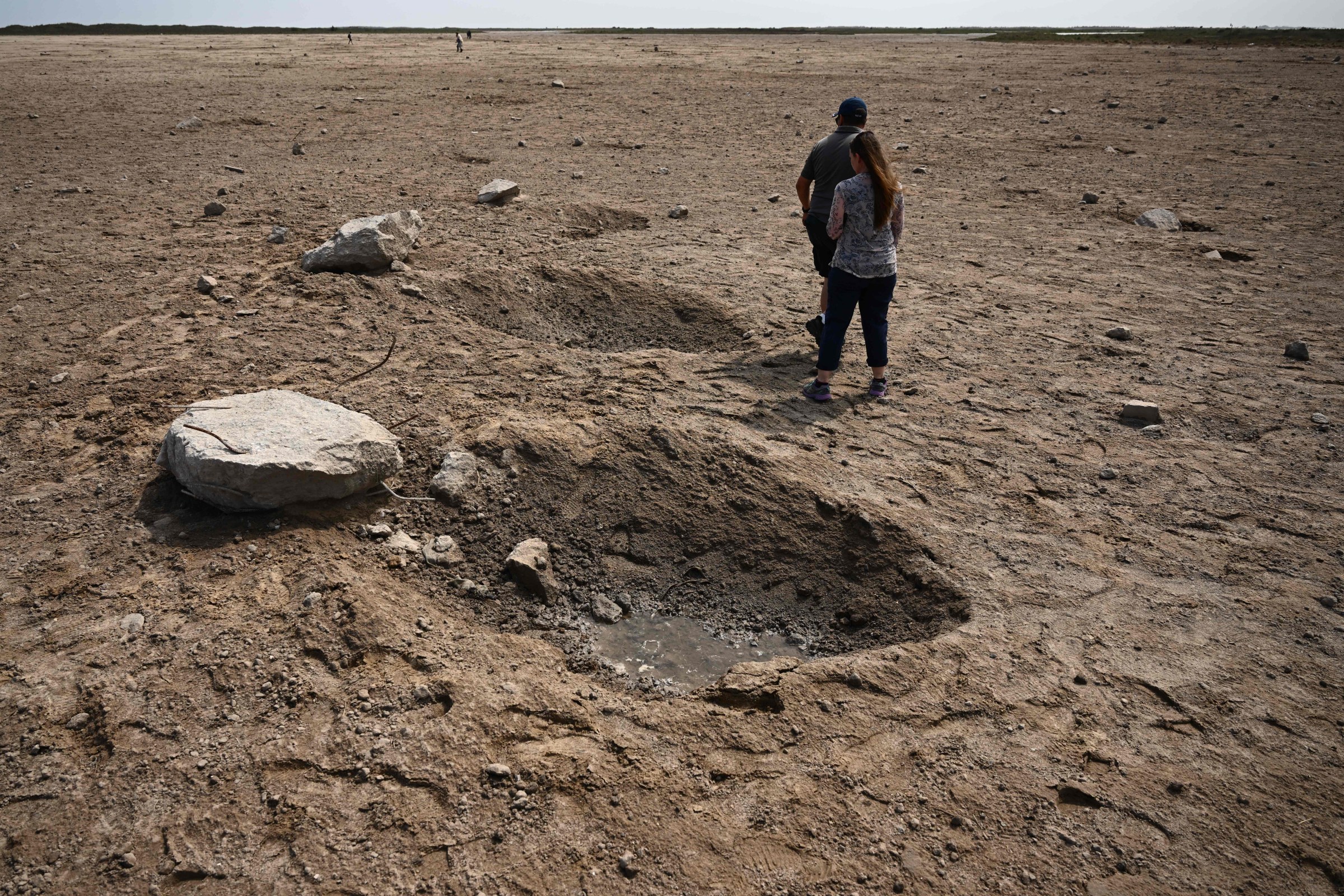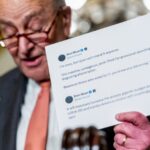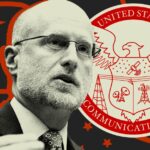Elon Musk runs companies that make electric vehicles and solar panels, things that are supposed to reduce pollution and fight climate change. But over the years, Musk’s companies have faced repeated accusations by regulators including the Environmental Protection Agency (EPA) that they’ve skirted the law, from allegations of Tesla mishandling hazardous waste to SpaceX polluting wetlands. Now, with President Donald Trump’s blessing, Musk is taking an ax to the federal agency tasked with enforcing environmental law in the US and regulating companies — including his own.
Internal EPA records obtained by The Verge show repeated enforcement actions against Tesla over the Clean Air Act and federal hazardous waste law between 2015 and February of this year. The records also show multiple enforcement actions EPA has taken against SpaceX over the Clean Water Act since 2015.
After spending hundreds of millions of dollars to help Donald Trump get reelected, Musk spearheaded the launch of the Department of Government Efficiency (DOGE) to slash federal spending and fire workers, including those from agencies that are supposed to ensure companies, including his own, follow the law. The EPA was one of the first on the chopping block, targeted with mass layoffs and drastic reductions in the scope of its work.
The agency’s ability to hold polluters accountable is at stake, current and former EPA employees and outside experts tell The Verge. The federal government’s environmental watchdog is being kept on a short leash, and a billionaire businessman with a track record of alleged abuses has his hand on it.
The agency’s ability to hold polluters accountable is at stake
“He’s just riding around like a lone ranger doing whatever he pleases, and Trump is letting him get away with it,” says Mary Nichols, distinguished counsel for the Emmett Institute on Climate Change and the Environment at UCLA School of Law and former chair of the California Air Resources Board. “Obviously, his motivation includes wanting to get rid of laws and agencies that have caused him problems, fined him, or cited him for violating the statutes, but he’s acting in his own interest.”
Tesla’s hazardous waste
In 2018, investigators with the San Francisco District Attorney’s Office rifling through Tesla’s trash discovered “the illegal disposal” of “hazardous automotive components.”
The types of waste investigators found were pretty common, including used lubricating oils, brake fluids, lead acid batteries, aerosols, antifreeze, waste solvents, paint, and e-waste. But mishandling them poses potential health and environmental risks, which is why their disposal is regulated. Lead and chlorinated solvents are toxic, oils are flammable, and acids are corrosive, for instance.
Other counties found similar “unlawful disposals” at more Tesla facilities. That included the company’s Fremont factory, where welding spatter waste and other debris contaminated with primer and paint were chucked into the trash unlawfully, according to the lawsuit.
The allegations against Tesla point to a systemic failure to properly handle hazardous waste over a period of time at the company’s California facilities, experts told The Verge after the company settled a lawsuit with San Francisco and 24 other counties filed against it last year. The suit alleged that Tesla had “intentionally” and “negligently” disposed of hazardous waste at more than 100 facilities across the state. Tesla agreed to pay $1.5 million as part of the settlement, but didn’t admit to any wrongdoing.
In 2019, the EPA settled another case with Tesla over hazardous waste violations at the same Fremont facility. An inspection of the facility found that it failed to comply with emissions standards for equipment leaks. The company subsequently paid a $31,000 penalty and agreed to purchase $55,000 worth of emergency response equipment for the Fremont Fire Department as part of the settlement. All in all Tesla had to pay little more than the cost of a Cybertruck.
That case lines up with details from screenshots of an internal EPA database obtained by The Verge that show four actions taken against the company over hazardous waste law in 2019. The database also showed four enforcement actions taken against Tesla over Clean Air Act violations in 2022.
“Honestly the biggest problem is the willful ignoring of the law.”
When The Verge reached out to the EPA for more details, a spokesperson pointed us to case documents for a $275,000 settlement the agency reached with Tesla that year after determining it had violated the Clean Air Act. At the time, the EPA found that the company failed to “develop and/or implement” a plan to minimize hazardous air pollutants from materials used in vehicle coating operations. The agency also says Tesla failed to calculate its emissions on a monthly basis or keep records required to show it was in compliance with federal law.
After each settlement, the EPA says Tesla corrected problems it found. But that wasn’t the end of alleged violations at its Fremont facility. Tesla received more than 112 notices of violation between 2019 and 2024 from a local regulator, the Bay Area Air District, for emitting smog-forming compounds and toxic air contaminants “directly into the atmosphere without proper abatement.” Each of those violations could result in “hundreds of pounds of illegal air pollution,” according to the Air District. Last year, its independent hearing board ordered Tesla to correct ongoing air quality violations in Fremont, including hiring a third-party consultant.
“Tesla’s ongoing violations at their Fremont facility pose a risk to public health and air quality in the surrounding community,” Philip Fine, executive officer of the Air District, said in a June press release.
Reached for comment for this story, a spokesperson for the Air District said in an email to The Verge that it is “working with Tesla to address the air quality violations at their Fremont facility and ensure compliance moving forward.” Tesla didn’t respond to requests for comment from The Verge.
Local agencies like the Bay Area Air District often take action before the EPA does, and can continue to step up in the absence of federal action. But if the EPA is MIA, it could lead to patchwork enforcement from state to state. That would still affect residents in states with strong local laws since pollution can waft across borders.
Tesla isn’t the only company in Musk’s extensive portfolio to face scrutiny. Screenshots of the internal EPA database reviewed by The Verge also show four enforcement actions taken against SpaceX over the Clean Water Act in 2024, which The Verge was able to line up with previous news reports and case documents we subsequently obtained from Texas regulators and the EPA.
“Honestly the biggest problem is the willful ignoring of the law,” says Eric Roesch, an environmental engineer who has written about Musk’s companies over the years on his blog ESG Hound.
SpaceX is developing the world’s most powerful rocket in Texas, meant to bring people to “the Moon, Mars and beyond.” In 2023, its first test flight ended in a spectacular explosion, sending shrapnel into at least one car parked nearby and reportedly spraying more debris onto beaches that are nesting grounds for endangered birds and sea turtles. CNBC reported last year that SpaceX skipped a permitting process in its rush to rebuild the launchpad and install a water deluge system to blunt the impact of launches.
Records that the Texas Commission on Environmental Quality (TCEQ) provided to The Verge show that it assessed a $3,750 penalty against SpaceX in 2024 for failing to obtain authorization to discharge industrial wastewater from its Starbase Launch Pad site. It alleges the company discharged industrial wastewater without an adequate permit on four separate occasions last year.
EPA case records show that the agency issued an order last March requiring Starbase to “eliminate unpermitted discharges.” SpaceX eventually agreed to pay a $148,378 civil penalty over Clean Water Act allegations, according to an EPA case filing from January 15th. The document lists eight unauthorized wastewater discharges between 2022 and 2024, releasing tens of thousands of gallons of waste into wetlands in each instance.
“SpaceX wants to play stupid and they’re waiting until a regulator points out the obvious: rocket deluge water is an industrial waste,” Roesch claimed on his blog, ESG Hound in 2023, after CNBC first reported that SpaceX didn’t have permits for its water deluge system.
SpaceX didn’t respond to requests for comment from The Verge for this story, but wrote on X last year that the CNBC story was “factually inaccurate.” It said that its deluge system “causes no harm to the environment.” “Throughout our ongoing coordination with both TCEQ and the EPA, we have explicitly asked if operation of the deluge system needed to stop and we were informed that operations could continue,” the company said on X.

Musk’s business empire is vast, and various accusations against it about its environmental impact are sprawling. Last year, Musk’s xAi faced allegations it installed and operated gas turbines at a data center in Memphis without a proper permit, creating pollution for surrounding communities. Workers building his underground transportation tunnels in Las Vegas reported suffering burns after having to wade through chemical-laced waters on the job, according to a 2024 Bloomberg investigation. And a ProPublica investigation in January says Musk’s Boring Company “skirted building, environmental and labor regulations” in Las Vegas, including releasing untreated wastewater into storm drains. None of those companies responded to inquiries from The Verge for this story.
Musk and Trump have been candid about why they want to kneecap federal regulators. They’re businessmen and they want to save money.
“If you deregulate, like have sensible regulations, because a lot of the regulations are nonsensical and cause the cost to be extreme for no reason,” Musk said while speaking with Trump during an X interview on August 12th.
Elon Musk shelled out big bucks for Trump’s presidential campaign, giving more than $250 million. Soon after, he was leading DOGE’s crusade “to cut the federal government down to size” — culling the federal workforce, including at the EPA. “A drastic reduction in federal regulations provides sound industrial logic for mass head-count reductions across the federal bureaucracy,” Musk and Vivek Ramaswamy wrote in their plans for DOGE published in the Wall Street Journal in November.
The EPA was one of the first agencies targeted by DOGE. Little more than a week after Trump’s inauguration, 1,100 probationary employees at the EPA received a “notice” by email telling them the agency “has the right to immediately terminate you.” A federal judge later ordered the Trump administration to rehire thousands of laid off federal workers.
“When you cut staff, you will get less work done. It is as simple as that.”
But more drastic cuts could be on the way, and an even slimmer staff would only make it harder to take up new cases. Trump and EPA administrator Lee Zeldin have floated the idea of slashing the EPA’s budget by 65 percent.
Yesterday, a day before Earth Day, EPA staff received a notice obtained by The Verge saying that the agency is planning another reduction in force. The staffing cuts would take effect on July 31st, the document says, and comply with Trump’s executive orders to end diversity and equity programs and implement his “Department of Government Efficiency Workforce Optimization Initiative.”
“When you cut staff, you will get less work done. It is as simple as that,” says Walter Mugdan, a former deputy regional administrator at the EPA and a volunteer with the Environmental Protection Network created by alumni of the agency. “I would anticipate that therefore, there will be fewer enforcement actions being initiated and fewer enforcement actions being completed.”
Trump and the rest of his team, of course, have their own deregulatory agenda at play. “Environmental [regulation] is the biggest tool for stopping growth … it costs much more to do things environmentally clean,” Trump said in an October 25th interview with Joe Rogan.
Project 2025, the conservative blueprint for Trump’s return, calls for eliminating the EPA’s stand-alone Office of Enforcement and Compliance Assistance and diffusing its work across several other departments. Breaking up the team that leads enforcement cases will make it more difficult for the EPA to enforce regulations, Larry Starfield, who served as the principal deputy assistant administrator of EPA’s Office of Enforcement and Compliance Assurance from 2011 to 2023, and other experts, tell The Verge. The Trump administration has already made plans to eliminate the agency’s scientific research and environmental justice offices.
March 12th marked “the greatest day of deregulation our nation has seen,” EPA administrator Lee Zeldin boasted. That day, the EPA announced more than 30 proposals to roll back protections against mercury, toxic air pollutants, soot, wastewater, chemicals, greenhouse gas emissions, and other kinds of pollution.
“Everything that we’re seeing certainly points to a political agenda behind enforcement, and that the priority is to let industry and regulated entities loose, unleash them from regulation,” says Starfield. “These regulations [were] written to protect human health and to reduce the number of cancer cases and other things. It’s pretty frightening.”
Who’s left to enforce environmental law?
On the same day, EPA leadership issued a memo restricting what kinds of enforcement actions the agency can take moving forward. It explicitly bars its enforcement arm from considering environmental justice in its decisions. It also stipulates that employees get approval from the assistant administrator of the EPA’s Office of Enforcement and Compliance Assurance for many actions deemed to “unduly burden or significantly disrupt energy production or power generation” or that involve rules the agency is currently reshaping.
“It’s a bottleneck, and it’s going to slow down and chill enforcement,” Starfield says. It adds to other measures DOGE has implemented that make it more difficult for federal agencies to do their work, like a $1 spending limit on credit cards that could affect EPA staff when they need to buy equipment and pay for lab samples. In March, the EPA reportedly issued more guidance to staff requiring DOGE to sign off on any actions costing more than $50,000.
“The reality is, this is a sophisticated plan consistent with Project 2025 to slow down and hamper enforcement, especially in communities that need the help the most,” Starfield says.
In a move that stunned environmental advocates, the US Department of Justice (DOJ) under Trump dropped a high-profile enforcement case on behalf of the EPA against a Louisiana rubber plant whose emissions of chloroprene, a chemical considered to be a likely carcinogen in humans, reached hundreds of students in nearby schools.
Career EPA employees warn that companies could see the dismissal as a pass to pollute. “I’m worried about the message this sends to industry. Already, I’m hearing about companies pushing back, referencing the weak position they perceive EPA to be in,” an EPA employee who was granted anonymity to speak freely out of fear of repercussions, tells The Verge. “I am worried about what happens if we attempt to enforce environmental regulations against a company with executives who are friends with Zeldin, or Musk, or Trump.”
During Trump’s first term in office, the average annual number of EPA inspections of polluters and average number of civil cases EPA referred to the DOJ dropped by roughly a third compared to the second term of the Obama administration, according to an analysis of agency data by the watchdog group Environmental Integrity Project (EIP). The recently dropped lawsuit is a signal that the trend is likely to continue under Trump’s return, says EIP executive director Jen Duggan.
“When EPA, under the Trump administration, dropped that case after years of litigating it, that is alarming, and it should put all of us communities across the country on notice that the Trump administration is not serious about enforcing environmental law,” Duggan says.
The DOJ declined to provide comment for this story. But in another sign of the Trump administration’s priorities, the DOJ has also reassigned environmental attorneys to work on immigration instead.
While this isn’t all Musk’s doing — it doesn’t hurt to be the president’s right-hand man. “I think federal enforcement officials, to the extent there still are any, may put going after the president’s best friend very low on their priorities list,” says Michael Gerrard, an environmental lawyer and faculty director of the Sabin Center for Climate Change Law at Columbia University.
The EPA tells The Verge its core mission of protecting human health and the environment hasn’t changed, it just tacked on another goal of powering “the Great American Comeback.”
“We are committed to enhancing our ability to deliver clean air, water, and land for all Americans. While no decisions have been made yet, we are actively listening to employees at all levels to gather ideas on how to better fulfill agency statutory obligations, increase efficiency, and ensure the EPA is as up-to-date and effective as ever,” Molly Vaseliou, EPA Associate Administrator for Public Affairs, said in an email to The Verge.
“How do you spell corruption? E-L-O-N.”
Elon Musk, meanwhile, has been able to escape scrutiny as an unofficial official within the Trump administration through DOGE — never having been elected or confirmed by the Senate to hold office like typical appointees.
“He’s acting as though he has authority, but he does not, in fact, have a paycheck, a title, an office, or a position that was ever created by Congress. So it can’t be a conflict of interest,” says Nichols, the environmental lawyer and former chair of the California Air Resources Board.
“How do you spell corruption? E-L-O-N,” EPA workers and their supporters chanted during protests against staffing and budget cuts at the agency on March 25th in New York, part of a “National Day of Action” with demonstrations fanning out across eight cities. Other workers held signs with the words “this man is not our boss” emblazoned in red over a sketch of Musk’s face.
Another EPA employee who was granted anonymity because of the risk of retaliation tells The Verge, starkly, “We’re just really concerned our enforcement offices are going to be neutered and we’re not going to be able to do this core mission of the agency.”
Are you a current or former employee at the EPA? Reach out securely with tips to Justine Calma via Signal at bqe210.91.
Read the full article here














